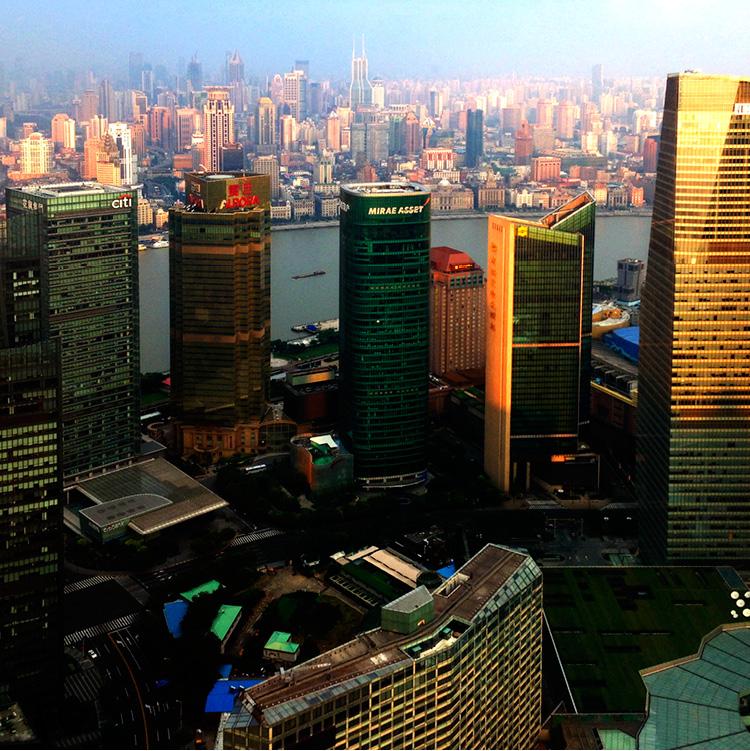"
If you have good architects you get beautiful buildings, if you have bold architects you may have memorable buildings – but that doesn’t necessarily make a great city."

Recently, Quadrangle Principal and CTBUH Canada Chairman, Richard Witt, attended the Council on Tall Buildings and Urban Habitat’s annual conference in Shanghai. The theme of this year’s conference was Future Cities: Towards a Sustainable Vertical Urbanism. Richard presented the outcomes of his research paper “Sustainable High Density Neighbourhoods” and we caught up with him for a short Q&A on his experience.
First can you share with us a little about the conference? Who was in attendance and what the conference intends to achieve?
The Council on Tall Buildings and Urban Habitat is a not-for-profit organization which is the world’s leading resource for professionals focused on the design, construction, and operation of tall buildings and future cities. The conference lasts four days and is filled with technical workshops, presentations on urban design and building tall, engineering and technical advances, sustainability and technical tours. In addition to the tours that were offered in Shanghai of buildings such as the Shanghai tower, Bund Finance Centre and Tomorrow Square, there were tours to other cities including Beijing, Changsha and Suzhou as well. Attendees ranged from developers and architects to engineers and specialty contractors, and included international representatives from most of the leaders in the field of tall building from all around the world.
Were the conclusions to your paper natural given your expertise in creating high density communities or were there some surprises through your research and reflections on where things currently stand?
The work in China is a lot more recent. Part of the paper was grounded in the kind of things we take for granted in a progressive urban city like Toronto, but in China there’s a lot more construction going on that is grounded in the theories, or even vernacular, that our best practices have moved well beyond. In Toronto we have an unusual combination of a city of neighbourhoods integrated with North America’s second most high-rise city. As a design community we take this for granted, but the consequences of high density neighbourhood aren’t accidental and this is where much of our design expertise is focused.

How do you feel it was perceived by the audience?
The audience found it interesting, and asked some good follow up questions. I think people find it hard to mentally leap from the huge isolated tower in the park arrangement, to urban streets and all that comes with that. But we’ve done that in Toronto, and hopefully people can wrap their head around it in China, (Chinese being the majority of the audience) because in spite of the seemingly endless amount of housing around cities like Shanghai, they still have a lot left to build.
Global cities are often lumped together for their similarities – whether it is access to global financial markets, or their scale or ease at which goods and people flow. However, at times they can have very different characteristics – say the size or the predominant ways and means in which people live and move through the city. What similarities do Shanghai and Toronto share in your opinion? And differences?
In spite of Shanghai being an incredibly westernised Chinese city, at a quick glance there’s not much similarity at all. What is very similar is that people and professionals in Shanghai generally have no idea what’s happening in Toronto in terms of growth and development – just as people and professionals in Toronto have no idea how growth and development is occurring in Shanghai. Although the city’s populations are wildly different, the actual percentage of annual growth is not much different – about 3%.
China does not appear too held back by the kind of bureaucracy that we are, and as a result has gone from no metro in 1995 to over 500km and almost 20 metro lines 20 years later for example. Readers in Toronto will know very well how this compares to the transit infrastructure growth we have experienced in Toronto in the same time frame. I find the overwhelming influence of uninformed politics and significant lack of inspired leadership in Toronto is frustrating. On the other hand Toronto is a safe, clean and well urbanised city – cited as one of the top five cities in the world to live. Shanghai is not on that list.
Lastly, returning to the building industry (both in a global and local context), what do you feel can be learnt from each respective market and transferred to the other? (E.g. Toronto to Shanghai and vice versa)
In a broad sense Toronto can learn that as a fast growing city we need consistency and inspired vision to ensure that all those things we’re doing well are not undermined by the lack of basic and necessary provision of infrastructure for our residents. China, and Shanghai in particular, can learn that essential human existence and living is very simple, basic and scalable. The almost endless supply of expressive building form which fills the cities of China is exciting but the residential construction which makes of 90% of every city is lacking the basics of authentic social life. If you have good architects you get beautiful buildings, if you have bold architects you may have memorable buildings – but that doesn’t necessarily make a great city. As populations grow and urbanisation mushrooms, an understanding of an urban design response which can accommodate all the necessary density, while establishing a safe and vibrant urban fabric, is what every city will need. It’s the development trajectory of Toronto, and one of the things we specialise in at Quadrangle.